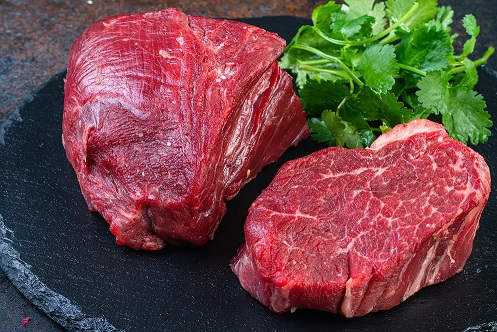No products in the cart.

Sinarooyesh, Innovation in Agriculture, Health for the Future.

Sinarooyesh, Innovation in Agriculture, Health for the Future.

The consumption of ostrich meat, like other meats, can be influenced by factors such as its breeding and processing methods in different societies.Breeding ostriches, as a relatively young branch of agriculture, still requires fundamental research on exploitation, particularly regarding feeding methods to achieve widely consumed meat.Intensive “fattening” of a large number of birds in limited outdoor spaces, coupled with a strong inclination to keep them indoors for most of the year, contrasts with extensive outdoor grazing throughout the year with only moderate supplementary feeding. This clearly indicates that only an ecological and extensive system of ostrich farming can lead to economic success.Competitive product prices—ostrich meat—are largely dependent on production costs, which can only be minimized through optimal utilization of the unique characteristics of ostriches.In South Africa, most ostriches are raised in steppe or semi-desert areas with poor vegetation and are fed either farm-grown products or commercially produced feed.In Southern Europe, Turkey, Greece, and all Eastern European countries, many birds are kept in very limited spaces—even in shelters that are heated during winter nights or for several months—and are almost exclusively fed commercial feed.
Farms utilize the high capacity of ostriches to digest fiber and convert it into growth. They keep their birds on large pastures year-round and supplement a maximum of one-third of their daily feed with a special farm mix or commercial production.However, the available grasslands for such ecological ostrich farming are scarce in all EU member states and Switzerland, making these farms still a minority.Nonetheless, new standards issued by the German Ministry of Agriculture now require doubling the farming space for smaller groups.Therefore, only farms with sufficient space will be able to operate economically in the future. There are various agricultural systems and differing views on suitable and economical feeding—and equally varied reports on the production costs of a bird.In 2000, there were about 4,000 ostrich farms in Italy and Spain; today only a handful remain in each country.Between 2001 and 2015, a total of 463 birds were monitored for slaughter across six ostrich farms in Germany (Baden-Württemberg, Rhineland-Palatinate, Hesse, Brandenburg) and Poland (Gdańsk region).Two of these farms (Group A) implemented an extensive system; two (Group B) used a semi-intensive system; and (Group C) adopted an intensive system.
Under extensive conditions, birds were raised until four weeks old. They were then transferred to contract farms where they were raised semi-extensively and intensively until slaughter.
The group size in farms B varied depending on age from 30 to 50 birds in paddocks ranging from 2,000 square meters to 7,000 square meters.
The third type of farm raised 10 to 12 birds in paddocks of approximately 600 square meters.
In total, 127 birds from type A, 198 from group B, and 138 from group C were tested.This was supplemented with a diet consisting of corn, barley, wheat and wheat bran, soybean meal, sugar beet pulp, and a pre-mixed vitamin/mineral supplement prepared fresh daily on the farm.
The daily amount varied depending on age from 10 grams to 1 kilogram per bird. The average daily intake of this supplementary feed from day three until slaughter was 825 grams.
From October to mid-April, each group had free access to silage or chopped hay (particle length of 2 to 5 centimeters).
Due to high bird density and resulting vegetation shortages, the total intake for group B consisted of silage (58%) and farm mix (42%).
The complete diet was formulated and calculated by the premix feed company; however, farmers often altered it as they did not always have all necessary components readily available.
The daily feed supply per bird was not determined by a set program but rather by farmer decisions based on age ranging from 1,100 grams to 5,000 grams. On average each bird consumed about 3,800 grams per day from the third month until slaughter.
Group C was exclusively fed pelleted feed produced from the farmer’s own products.
Daily supply ranged between 1.030 grams to 3.000 grams depending on age with an average of 2.620 grams pellets and 1 kilogram hay.
763 people were interviewed regarding their acceptance of ostrich meat from extensive or intensive farming with known (regional) or unknown (international) origins and their willingness to pay more for meat from known rather than unknown production sources.92.2% of respondents preferred meat from extensive agriculture while 78.6% preferred known sources.83.5% were willing to pay a higher price for ostrich meat produced through extensive farming as they believed this product is of higher quality and produced without additives; thus safer for consumers.Industrial agriculture practices—intensive farming and use of industrially produced feed—as is now common even in temperate countries with good pastures are not accepted by consumers due to high costs and low margins jeopardizing farm sustainability; this is not just an issue for hot and dry regions but also affects countries and farms alike.The use of intensive systems is due either to space shortages or outdated views on livestock farming. New stringent standards issued by the German Ministry of Agriculture effectively compel German ostrich farmers to adopt economically viable methods that also ensure bird welfare.As an additional beneficial effect for producers as well as animals, consumers have a positive image of German ostrich farming and appreciate products that farmers can confidently offer.